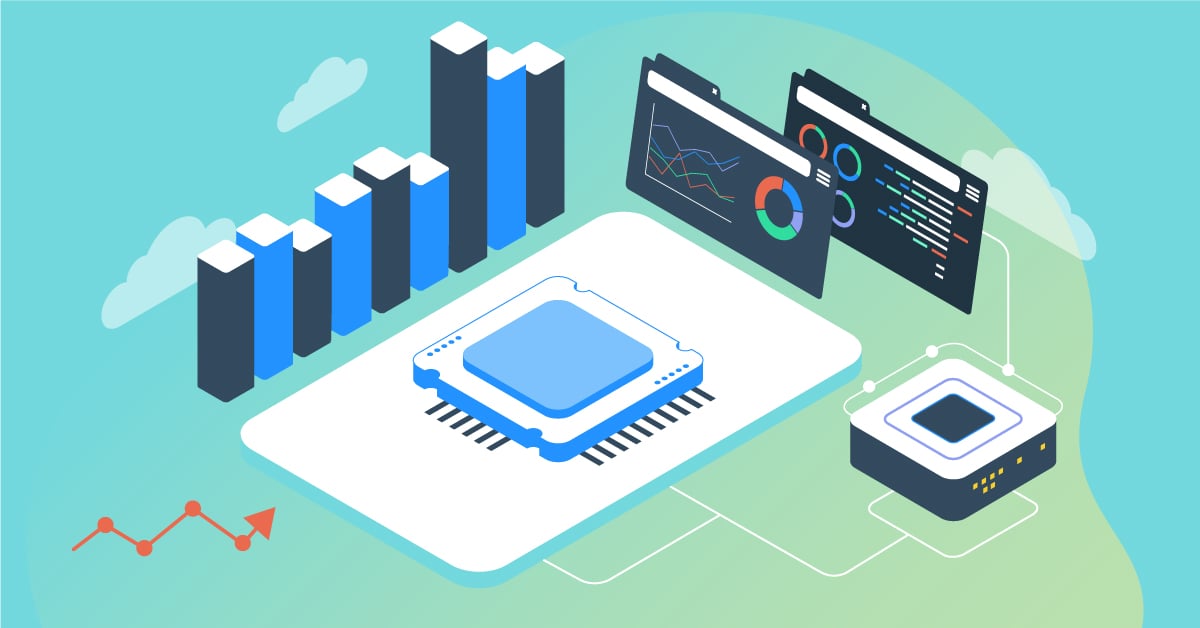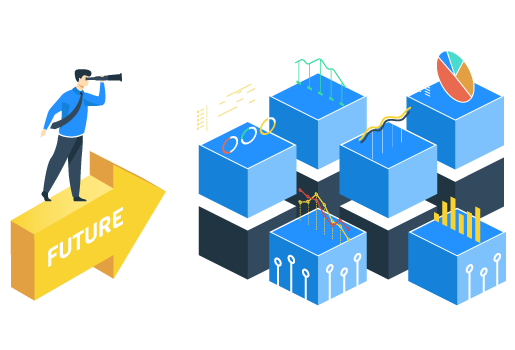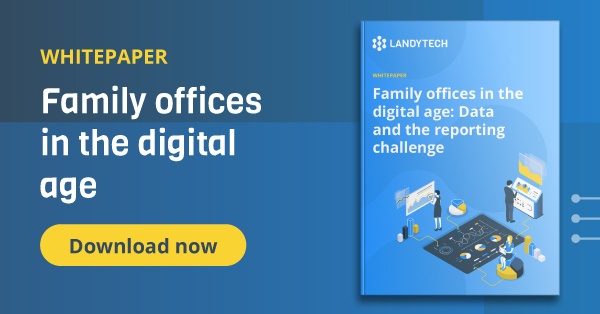Written by Landytech
9 Aug 2022Once confined to a world of spreadsheets and static presentations, family office reporting is beginning to take on a radically different form as automated data consolidation and near-real-time portfolio monitoring become the norm.
In recent years, great strides have been made in the areas of data aggregation, portfolio analytics, and data visualisation, enabling family offices to create better reports, faster and with more efficiency.
As families begin to expect greater insights on their portfolios and more visually compelling reports, especially with the transition of wealth to the next generation, family offices need to find a balance between customisability and scale.
While some family offices have already made the leap to modern technology, reporting continues to evolve rapidly. So, what does the future hold for family office reporting?
Consolidated Reporting
Consolidated reporting is an increasingly central component of the family office proposition. With digitalisation infiltrating every aspect of our lives, families have come to expect a rich flow of comprehensive, timely information that gives an aggregated picture of their allocations, performance and risks across the entire asset portfolio.
But providing consolidated reporting to families is no small ask, requiring family offices to manage vast amounts of data. Family portfolios tend to be complex, spanning multiple asset classes, geographic markets and investment structures. And portfolio information may be spread across many third-party banks, custodians, administrators and private sources. Portfolio diversification in recent years in the hunt for higher risk-adjusted returns has only added to the complexity.
Without the right technology, it can be a very manual and time-consuming process, which is prone to errors as data requires consolidation across multiple systems, spreadsheets and statements.
Providing a digital experience
Family offices operate in a fast-paced, increasingly real-time world, where outmoded data equals heightened risk and missed opportunities. Families, especially the younger generations, expect the information they receive to be completely up to date. Tolerance for reporting delays and data inaccuracies is eroding fast. They also want fingertip access to this rich flow of timely information.
Families want modern, easy-to-use applications with an intuitive dashboard displaying all their key information in an attractive, digestible format. Preferably with the flexibility to look-through, manipulate and see consolidated data at any level. Successful family offices will be those that commit to delivering a seamless, responsive digital service that adds value, and stays current with the latest technological capabilities to meet their evolving expectations.
Family offices that embrace the challenge will benefit from multiple, frequent touchpoints with families, giving them more opportunities to add and demonstrate value, reinforcing relationships with the current generation of wealth owners, but also building firm foundations with the next.
Enhanced portfolio insight
Families don’t want to be buried by information. Instead, they are looking for enhanced insights – actionable, personalised analysis that makes sense of the data overload and presents easy-to-understand conclusions that can be applied in the real world. Families’ transparency demands are growing too. They want detailed yet intelligible insights on portfolio performance, along with increasing amounts of risk analytics across areas such as exposure and liquidity.
For this reason, advanced performance and risk analytics are becoming ever more important in family office reporting. Producing comprehensive, customisable reports providing granular detail on portfolio returns and the reasons behind them gives families the transparency and comfort they seek. During periods of poor performance in particular, this can help families better understand why performance has suffered, and reassures them that long-term objectives are on track.
Timeliness of insights is also becoming more crucial. Responding to family requests for ad hoc reports or analytics should take no more than a day. Taking two to three weeks to extract the data from multiple places, before manually cleansing and collating it to produce the reports families want to see is no longer acceptable. Family offices need software that gives them the on-demand flexibility to keep up.
A digital future for family office reporting
With family portfolios now spanning a complex range of diverse assets across multiple banks and custodians, sourcing the required data and manually transposing it into visually compelling reports that provide the insights that families want can be extremely laborious.
It consumes time that could be spent deepening client relationships and performing portfolio analysis. By getting bogged down in data sourcing and consolidation in spreadsheets, the danger is that family offices become distracted from their core purpose of meeting their families’ needs, instead creating inefficiency and additional cost.
What can family offices do to rise to the challenge? Find out in our latest whitepaper.
Related Content
.png)
How Landytech is Revolutionising Client Reporting in the Investment Management Industry
Following Landytech's recent win in the Client Reporting category at the WealthBriefing Channel Island Awards, our COO, Gregory Chouette, had the pleasure of sitting down with Clear Path Media, the organisers of the awards, for an interview. In the...

How Sesame Revolutionises Reporting for Family Offices
As family portfolios become more complex and the data burden increases, family office staff are increasingly bogged down in spreadsheets and legacy systems that struggle to keep up. And as families become exposed to more and more sophisticated...

How Sesame Revolutionises Reporting for Asset Managers
To date, there has been reluctance from asset managers when it comes to fully digitalising their reporting processes. But as investor service expectations evolve in their pursuit of clearer insights, more risk metrics and visually compelling...



